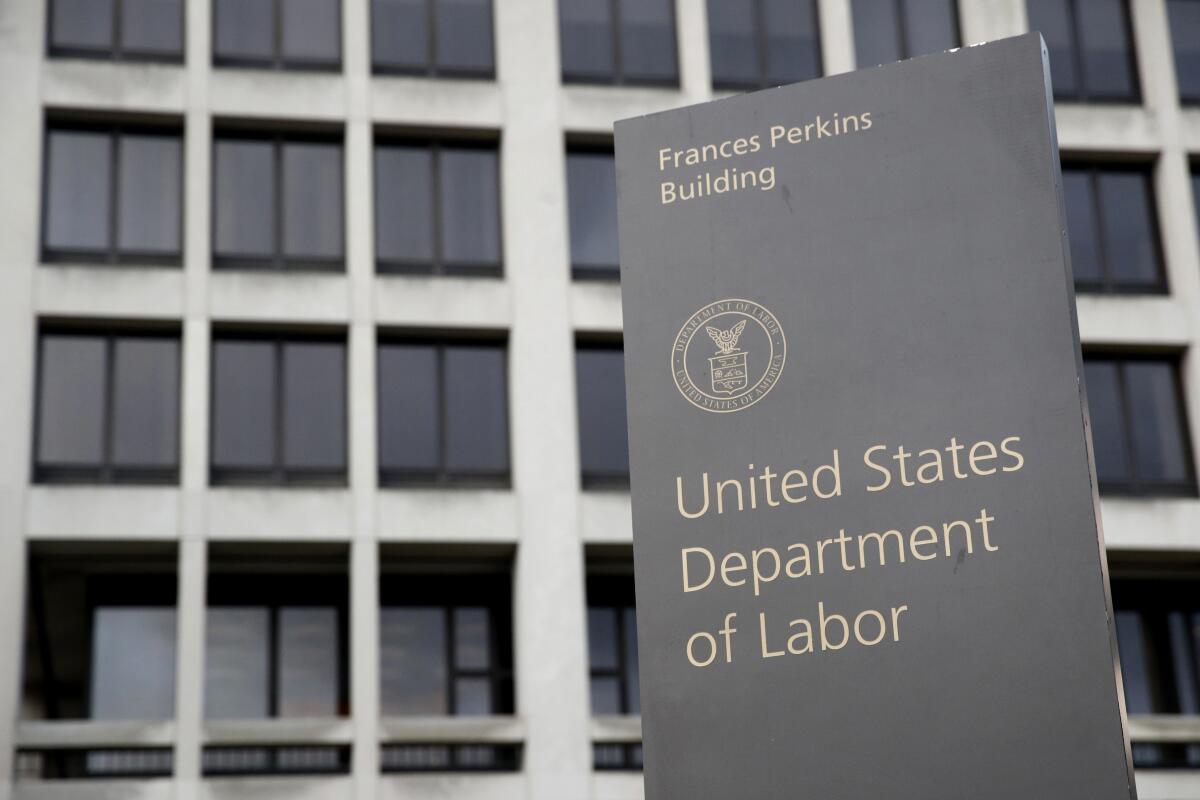Biden administration adopts new rules to boost overtime pay. California was way ahead

- Share via
The Biden administration on Wednesday adopted new rules that starting July 1 will enhance overtime protections for millions of U.S. white-collar workers who receive salaries but typically work in relatively low-paying jobs.
More than an estimated 3 million Americans could stand to benefit from the plan when they work more than 40 hours a week. Will you? Here is a rundown of the new rules.
What are the changes the Biden administration made ?
The changes by the U.S. Department of Labor make workers who receive salaries of up to $1,059 per week, or $55,068 annually, eligible for overtime pay.
Typically, overtime is broadly defined as a rate of at least one and half times regular pay and is granted after a worker has exceeded 40 hours in a week. Salaried workers are usually exempt from overtime pay rules that apply to hourly workers.
What were the previous regulations regarding salaried workers?
Previously, only salaried workers paid up to $684 per week, or $35,568 annually, qualified for overtime pay. Generally, employees of enterprises that gross $500,000 or more are covered by the Fair Labor Standards Act, which covers overtime pay. That means all but the smallest of businesses must adhere to the rules.
Why is the administration updating the rules now ?
The Labor Department notes that since the last increase went into effect in 2020 there have been consistent increases in wages, meaning fewer salaried workers qualify for overtime even if they are doing the same job. The proposal also calls for automatically updating the earnings threshold every three years — something the Obama administration had proposed in 2015.
How many workers will the change affect?
The administration estimates that 3.4 million workers will benefit from the change. Ken Jacobs, chairman of the UC Berkeley Center for Labor Research and Education, said he expected the fast-food and retail industries where supervisory wages are low to be affected the most.
Is there any sense of how much they will benefit?
The department estimates that in the first year, the rule will put $1.2 billion in employees’ pockets, both in the form of more overtime pay and also salary increases by employers to ensure their white-collar workers will be exempt from the new rules.
Will I benefit if I live in California?
The proposed raising of the salary threshold will not affect California workers, who already benefit from a more generous standard. Salaried workers in California are eligible for overtime if they are paid up to $64,480, or twice the state minimum wage of $15.50 per hour.
What do businesses think of the new rules ?
The National Retail Federation, which represents an industry expected to be heavily affected, issued a statement of concern when the rules were first proposed. David French, senior vice president of government relations, said the “the attempt to tie the hands of future administrations through automatic increases exceeds the Department’s authority.”
More to Read
Updates
10:27 a.m. April 24, 2024: This story was updated to reflect the adoption of the new overtime rules. It was originally published on Aug. 30, 2023.
Inside the business of entertainment
The Wide Shot brings you news, analysis and insights on everything from streaming wars to production — and what it all means for the future.
You may occasionally receive promotional content from the Los Angeles Times.










